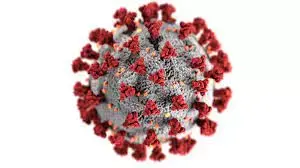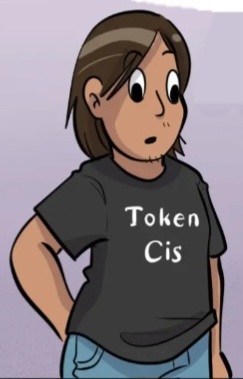Good piece from Ed Yong, who just returned from his hiatus. Here's a key section:
Most Americans simply aren’t thinking about COVID with the same acuity they once did; the White House long ago zeroed in on hospitalizations and deaths as the measures to worry most about. And what was once outright denial of long COVID’s existence has morphed into something subtler: a creeping conviction, seeded by academics and journalists and now common on social media, that long COVID is less common and severe than it has been portrayed—a tragedy for a small group of very sick people, but not a cause for societal concern. This line of thinking points to the absence of disability claims, the inconsistency of biochemical signatures, and the relatively small proportion of severe cases as evidence that long COVID has been overblown. “There’s a shift from ‘Is it real?’ to ‘It is real, but …,’” Lekshmi Santhosh, the medical director of a long-COVID clinic at UC San Francisco, told me.
Yet long COVID is a substantial and ongoing crisis—one that affects millions of people. However inconvenient that fact might be to the current “mission accomplished” rhetoric, the accumulated evidence, alongside the experience of long haulers, makes it clear that the coronavirus is still exacting a heavy societal toll.
As it stands, 11 percent of adults who’ve had COVID are currently experiencing symptoms that have lasted for at least three months, according to data collected by the Census Bureau and the CDC through the national Household Pulse Survey. That equates to more than 15 million long-haulers, or 6 percent of the U.S. adult population. And yet, “I run into people daily who say, ‘I don’t know anyone with long COVID,’” says Priya Duggal, an epidemiologist and a co-lead of the Johns Hopkins COVID Long Study. The implication is that the large survey numbers cannot be correct; given how many people have had COVID, we’d surely know if one in 10 of our contacts was persistently unwell.
But many factors make that unlikely. Information about COVID’s acute symptoms was plastered across our public spaces, but there was never an equivalent emphasis that even mild infections can lead to lasting and mercurial symptoms; as such, some people who have long COVID don’t even know what they have. This may be especially true for the low-income, rural, and minority groups that have borne the greatest risks of infection. Lisa McCorkell, a long-hauler who is part of the Patient-Led Research Collaborative, recently attended a virtual meeting of Bay Area community leaders, and “when I described what it is, some people in the chat said, ‘I just realized I might have it.’”
Admitting that you could have a life-altering and long-lasting condition, even to yourself, involves a seismic shift in identity, which some people are understandably loath to make. “Everyone I know got Omicron and got over it, so I really didn’t want to concede that I didn’t survive this successfully,” Jennifer Senior, a friend and fellow staff writer at The Atlantic, who has written about her experience with long COVID, told me. Duggal mentioned an acquaintance who, after a COVID reinfection, can no longer walk the quarter mile to pick her kids up from school, or cook them dinner. But she has turned down Duggal’s offer of an appointment; instead, she is moving across the country for a fresh start. “That is common: I won’t call it ‘long COVID’; I’ll just change everything in my life,” Duggal told me. People who accept the condition privately may still be silent about it publicly. “Disability is often a secret we keep,” Laura Mauldin, a sociologist who studies disability, told me. One in four Americans has a disability; one in 10 has diabetes; two in five have at least two chronic diseases. In a society where health issues are treated with intense privacy, these prevalence statistics, like the one-in-10 figure for long COVID, might also intuitively feel like overestimates.
Some long-haulers are scared to disclose their condition. They might feel ashamed for still being sick, or wary about hearing from yet another loved one or medical professional that there’s nothing wrong with them. Many long-haulers worry that they’ll be perceived as weak or needy, that their friends will stop seeing them, or that employers will treat them unfairly. Such fears are well founded: A British survey of almost 1,000 long-haulers found that 63 percent experienced overt discrimination because of their illness at least “sometimes,” and 34 percent sometimes regretted telling people that they have long COVID. “So many people in my life have reached out and said, ‘I’m experiencing this,’ but they’re not telling the rest of our friends,” McCorkell said.
Imagine that you interact with 50 people on a regular basis, all of whom got COVID. If 10 percent are long-haulers, that’s five people who are persistently sick. Some might not know what long COVID is or might be unwilling to confront it. The others might have every reason to hide their story. “Numbers like 10 percent are not going to naturally present themselves in front of you,” McCone told me. Instead, “you’ll hear from 45 people that they are completely fine.”
The same factors that stop people from being public about their condition—ignorance, denial, or concerns about stigma—also make them less likely to file for disability benefits. And that process is, to put it mildly, not easy. Applicants need thorough medical documentation; many long-haulers struggle to find doctors who believe their symptoms are real. Even with the right documents, applicants must hack their way through bureaucratic overgrowth, likely while fighting fatigue or brain fog. For these reasons, attempting to measure long COVID through disability claims is a profoundly flawed exercise. Even if people manage to apply, they face an average wait time of seven months and a two-in-three denial rate. McCone took six weeks to put an application together, and, despite having a lawyer and extensive medical documentation, was denied after one day. McCorkell knows many first-wavers—people who’ve had long COVID since March 2020—“who are just getting their approvals now.”
The last few paragraphs of the article are very good, too:
To a degree, I sympathize with some of the skepticism regarding long COVID, because the condition challenges our typical sense of what counts as solid evidence. Blood tests, electronic medical records, and disability claims all feel like rigorous lines of objective data. Their limitations become obvious only when you consider what the average long-hauler goes through—and those details are often cast aside because they are “anecdotal” and, by implication, unreliable. This attitude is backwards: The patients’ stories are the ground truth against which all other data must be understood. Gaps between the data and the stories don’t immediately invalidate the latter; they just as likely show the holes in the former.
Laura Mauldin, the disability sociologist, argues that the U.S. is primed to discount those experiences because the country’s values—exceptionalism, strength, self-reliance—have created what she calls the myth of the able-bodied public. “We cannot accept that our bodies are fallible, or that disability is utterly ordinary and expected,” she told me. “We go to great pains to pretend as though that is not the case.” If we believe that a disabling illness like long COVID is rare or mild, “we protect ourselves from having to look at it.” And looking away is that much easier because chronic illnesses like long COVID are more likely to affect women—“who are more likely to have their symptoms attributed to psychological problems,” Mauldin said—and because the American emphasis on work ethic devalues people who can’t work as much or as hard as their peers.
Other aspects of long COVID make it hard to grasp. Like other similar, neglected chronic illnesses, it defies a simplistic model of infectious disease in which a pathogen causes a predictable set of easily defined symptoms that alleviate when the bug is destroyed. It challenges our belief in our institutions, because truly contending with what long-haulers go through means acknowledging how poorly the health-care system treats chronically ill patients, how inaccessible social support is to them, and how many callous indignities they suffer at the hands of even those closest to them. Long COVID is a mirror on our society, and the image it reflects is deeply unflattering.
Most of all, long COVID is a huge impediment to the normalization of COVID. It’s an insistent indicator that the pandemic is not actually over; that policies allowing the coronavirus to spread freely still carry a cost; that improvements such as better indoor ventilation are still wanting; that the public emergency may have been lifted but an emergency still exists; and that millions cannot return to pre-pandemic life. “Everyone wants to say goodbye to COVID,” Duggal told me, “and if long COVID keeps existing and people keep talking about it, COVID doesn’t go away.” The people who still live with COVID are being ignored so that everyone else can live with ignoring it.
I swear, one of my coworkers got brain damage from covid. Not in a "he's so much stupider now" kind of way, but in a "he's super irritable now" kind of way. He gets pissed off at... everything. Like if someone tells him how to do something that he's asking how to do, he'll get mad at them for explaining it? It's crazy.
Look, it's fine, covid is over, there are no repercussions to a significant chunk of your population being immunocompromised, ignore the multiple other epidemics, everything is just HERE COMES ANOTHER WAVE!!! :covid-cool:
This, every 6 months for the foreseeable future. :this-is-fine:
The amount of people hiding their ailments or chalking it up to "aging" must be staggering.
The new line I've seen is that it was only the pre-omicron variants that fucked people up, but...
70 per cent of Hong Kong Covid victims experience long-term after-effects, survey of 10,000 patients finds "Almost all of them – 97 per cent – had been infected with the Omicron variant of the coronavirus."
:so-true: It's mild!


